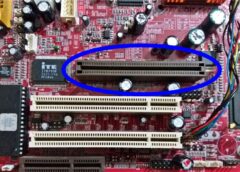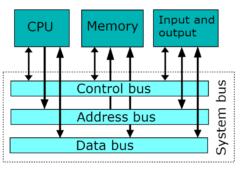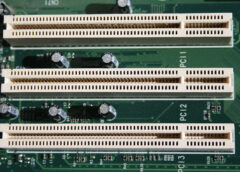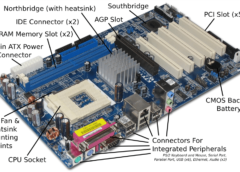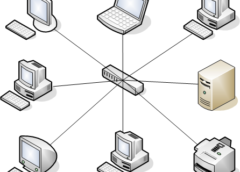
Computer Network topology is the layout design of the interconnections between computers and network devices.
Think of a topology as the virtual shape or structure of the network. Simply put, it is the physical layout of computers, cables, and other components on the network.
When you are creating a new network the first most important thing to think of is the type of network topology to use. Devices on the network are referred to as ‘nodes.’ The most common nodes are computers and peripheral devices.
List of Computer Network Topology
- Bus topology
- Star topology
- Ring topology/Loop
- Mesh topology
- Hybrid topology
- Tree topology
The Bus Topology
In the bus topology computers and other devices are linked to one another by tapping into a common central cable. This kind of a network topology shares a common single cable.

It is often referred to as a linear bus. Simply because computers are connected in a straight line. Both ends of the network cable are terminated using a terminator. This prevents signals from bouncing back. If signals bounce back, they will cause interference within the network.
In the bus topology, data packets (the message sent through a network) are sent to all computers on the trunk. Each computer examines every packet on the wire to determine who the packet is for and accepts only messages addressed to it. Usually, bus topology makes use of thinnet or thicknet media type. The devices connected to the bus are known as nodes.
Advantages of the Bus Topology
- It is cost-effective as set up does not involve much.
- Cable cost is very minimal as the length required is the least in comparison to other topologies.
- It is easy to understand the working of this topology.
- Expansion can be done easily by tapping from the main cable.
Disadvantages of Bus Topology
- If the main cable breaks, the entire network goes down.
- There are data collisions when the traffic is heavy.
- When nodes are many or when there is more traffic, performance goes down.
- It is difficult to detect faults within the network.
- Limited cable length.
The Star Topology
In the star topology, all systems are connected to a centralized multiple port device called a hub. Data packets or signals are transmitted from the sending computer through the switch to the respective computer on the network. The switch is an intelligent device that controls the flow of data within the network.
The star topology is widely used. It offers centralized monitoring management and it is easy to modify and add new computers. If one computer fails it will not affect the rest of the network, but if the switch fails the whole network segment will be down.
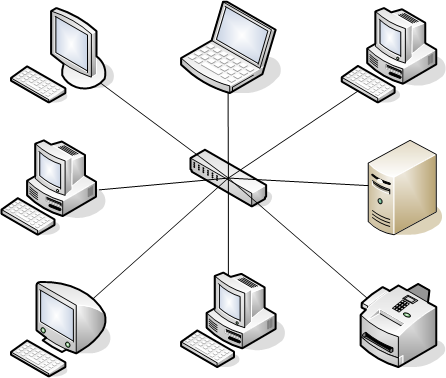
Advantages of Star Topology
- It is also easy to add new nodes to the network.
- The network is robust in the sense that if one connection between a computer and the hub fails, the other connections remain intact.
- It is easy to set up and modify.
- It has easy fault detection.
Advantages of Star Topology
- If the central hub fails, the entire network goes down.
- Installation cost is high.
Ring or Loop Topology
In a ring or loop topology, as the name suggests, the computers are wired on a single circle of cable, such that they are organized into a loop. Each station acts as a repeater and keeps the signal strong by repeating it or regenerating it.
The ring topology makes use of token passing access method. A token can be seen as an envelope or a bag where data is placed for transmission around the network. Only the computer with the token is allowed to transmit.
On receiving the data, the computer checks the source and destination address of the data packets to determine where the data is coming from and its destination. If it does not belong to it, it will be passed to the next computer.
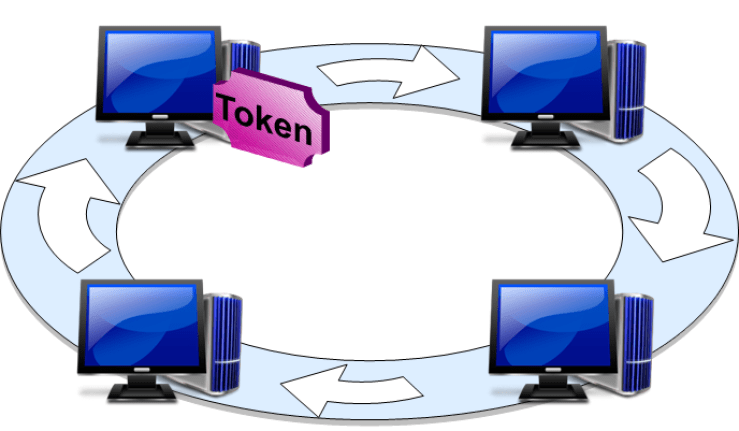

Advantages of Ring Topology
- This topology is easy to install and reconfigure.
- It is also good for handling high-volume traffic over long distances since every computer can act as a booster of the signal.
- It offers equal access to all the computers of the networks.
Disadvantages of Ring Topology
- If one single computer fails, the entire network can go down.
- If there’s a problem in the network, it is a tedious task to troubleshoot.
Mesh Topology
In a mesh topology, each computer is connected to every other computer by separate cabling. That means every computer has multiple possible connection paths to the other computers on the network. So a single cable break will not stop network communications between any two computers.
This kind of configuration used in mesh topology provides redundant paths throughout the network so that if one cable fails, another will take over the traffic. Nodes that are not directly connected make use of intermediate nodes. A mesh topology network offers superior redundancy and reliability.
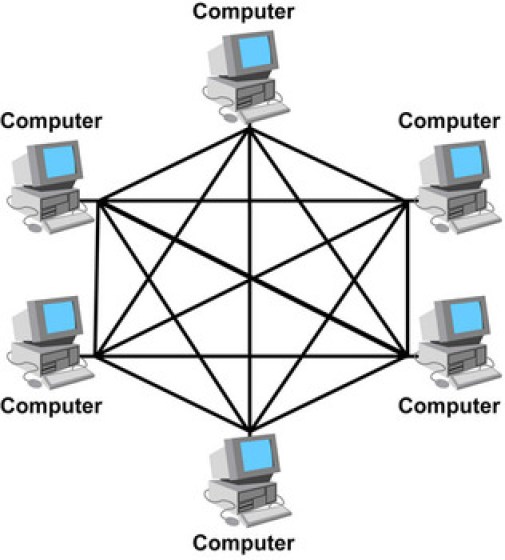
Advantages of Mesh Topology
- It is easy to expand the network without disrupting users.
- There is no data traffic issue as there is a dedicated link between two devices. This means the link is only available for those two devices.
- This topology is reliable and robust as a failure of one link doesn’t affect other links and the communication between other devices on the network.
- Mesh topology is secure because there is a point to point link thus unauthorized access is not possible.
- It is easy to detect errors.
Disadvantages of Mesh Topology
- This type of topology requires a lot of cables and is, therefore, expensive.
- It is a challenge to install and configure.
- It requires a lot of space to run the cables.
Hybrid Topology
A hybrid topology combines two or more topologies to create a robust network. This creates a reliable and more scalable computer network topology.
The choice of a hybrid topology is dependent on the needs of a business, organization, company or any other entity. The most commonly used hybrid topologies are the star-ring hybrid topology and star-bus hybrid network topology.
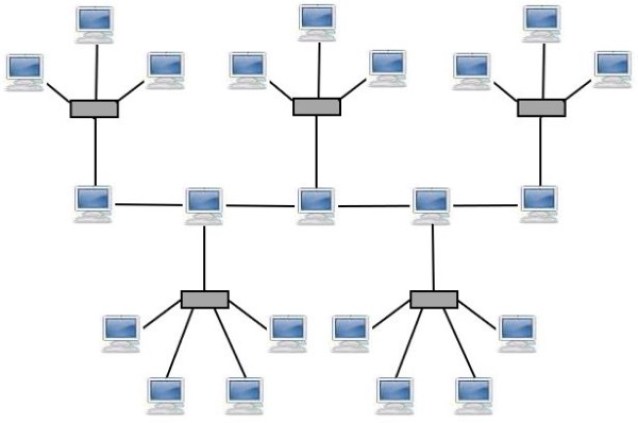
Advantages of Hybrid Topology
- It is possible to choose the topology you want based on your needs.
- This type of network is scalable as you can further connect other computer networks.
- It is easy to troubleshoot and it provides simple error-detecting techniques.
Disadvantages of Hybrid Topology
- Designing this type of network is much complicated.
- It is expensive to implement as it involves more than one topology.
Tree Topology
In this special structure, the connected nodes and devices are arranged like the branches of a tree. It is also known as a star bus topology. The central nodes of several star networks are connected via a bus. This type of topology can also be referred to as a hierarchical topology.

Advantages of Tree Topology
- It is easy to expand the network.
- This type of network topology is easy to maintain and manage.
- It is easy to detect an error in the network.
Disadvantages of Tree Topology
- It uses a lot of cables.
- It is expensive to set up when compared to other topologies.
- If the root node goes down, the rest of the network will cease to function.
Conclusion on Computer Network Topology
It is my sincere hope that you have learnt something useful about computer network topology. There are more articles about computer in this blog that can help you. I will always strive to give the best.
Your comments and questions are highly welcome here below. You can also share this post on any social media. I thrive because of you sharing the post.
52 total views , 1 views today









![[Resource]: Installing Webuzo on Your Nestict Cloud VPS: A Detailed Guide](https://www.blog.nestict.com/wp-content/uploads/2024/12/image.webp)
![[Resource] : Comprehensive List of Equity Bank Codes Across Kenya by Region](https://www.blog.nestict.com/wp-content/uploads/2024/12/image-5.png)



![[Continuation]: Current Challenges in Making Physics and Geography Compulsory](https://www.blog.nestict.com/wp-content/uploads/2024/12/The-universe-of-mathematics-physic-and-astronomy-its-ama…-Flickr.jpg)
![[Resource] : Why Physics and Geography Should Be Compulsory Like Mathematics in Education](https://www.blog.nestict.com/wp-content/uploads/2024/12/image.png)


![[LINKTREE] 2024 PAST PAPERS , NOTES ,RESOURCE,REVISION,EXAMINATIONS](https://www.blog.nestict.com/wp-content/uploads/2024/10/SCHM.jpeg)


![Maritime Terms, Abbreviations and Acronyms [Shipping Terms – Searchable]](https://www.blog.nestict.com/wp-content/uploads/2024/09/Container-Stowage-Stock-Illustrations-–-71-Container-Stowage-Stock-Illustrations-Vectors-Clipart-Dreamstime.jpg)
![Maritime Terms, Abbreviations and Acronyms [ Shipping Terms]](https://www.blog.nestict.com/wp-content/uploads/2024/09/image.png)





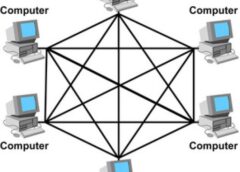


![[Explainer]: NVMe storage, SSD (SATA SSD), and HDD](https://www.blog.nestict.com/wp-content/uploads/2024/08/Laptops-are-available-with-SSDs-and-HDDs.png)
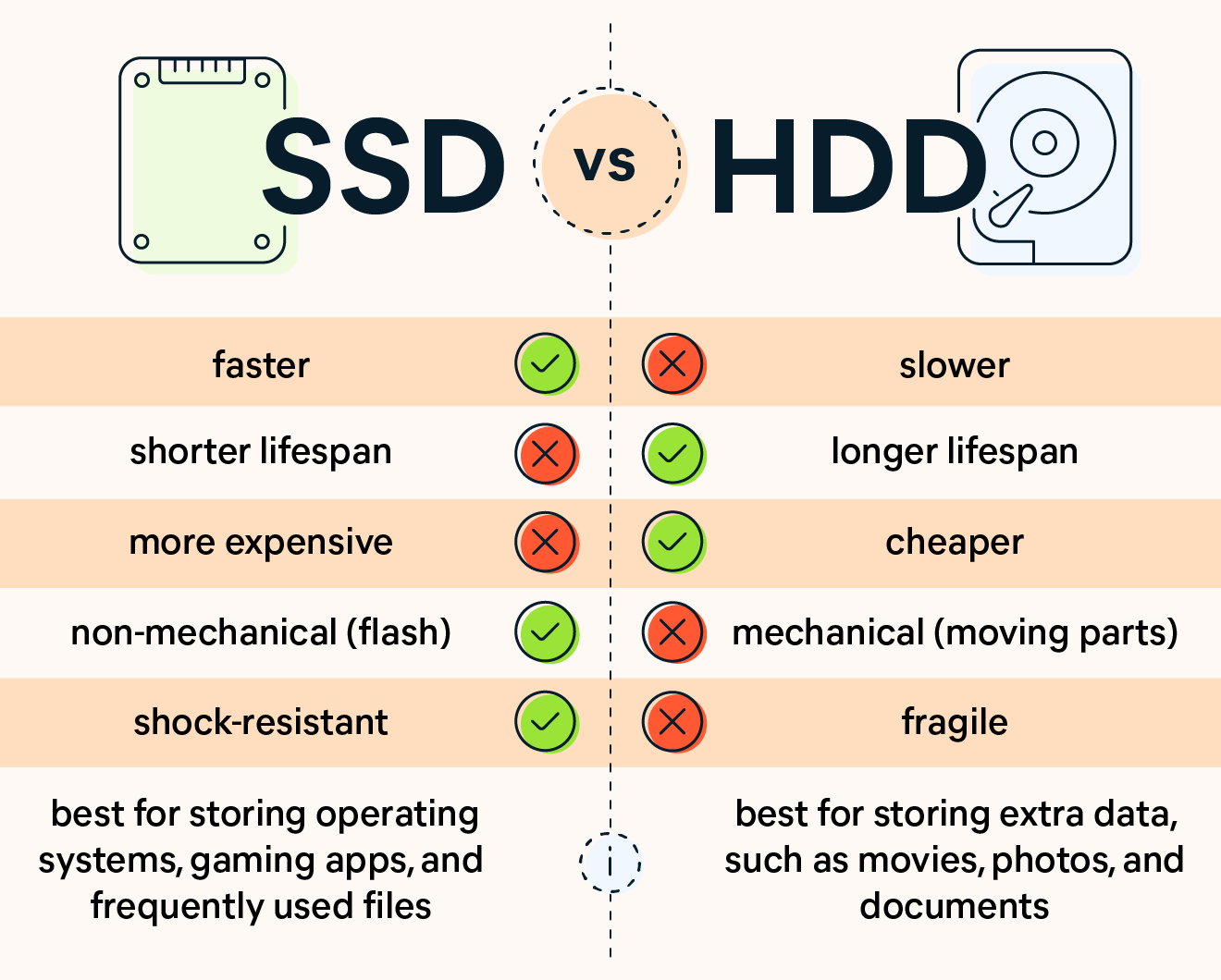
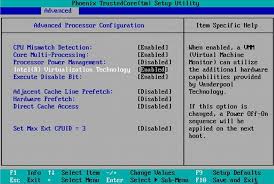
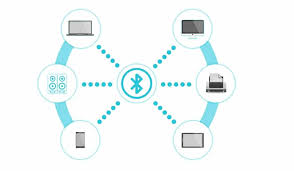

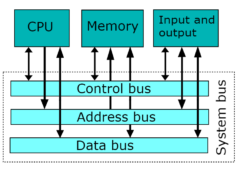

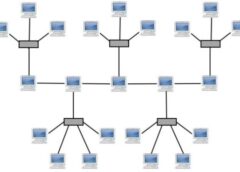







![[Updated 2024] – Passport Application FOR CHILDREN ONLY(PERSONS UNDER 18 YEARS)](https://www.blog.nestict.com/wp-content/uploads/2023/09/keppp-240x172.png)
![[Updated 2024] -Passport Application FOR ADULTS ONLY-PERSONS OVER 18 YEARS](https://www.blog.nestict.com/wp-content/uploads/2023/09/EAF-Passport-e1631045054464-400x800-1-240x172.jpg)

